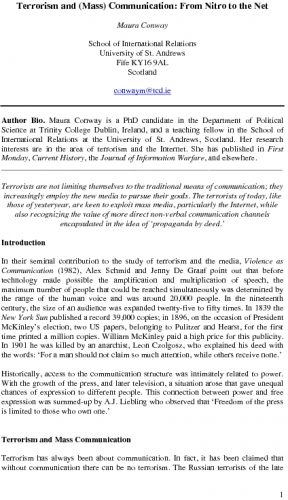In their seminal contribution to the study of terrorism and the media, Violence as Communication (1982), Alex Schmid and Jenny De Graaf point out that before technology made possible the amplification and multiplication of speech, the maximum number of people that could be reached simultaneously was determined by the range of the human voice and was around 20,000 people. In the nineteenth century, the size of an audience was expanded twenty-five to fifty times. In 1839 the New York Sun published a record 39,000 copies; in 1896, on the occasion of President McKinley’s election, two US papers, belonging to Pulitzer and Hearst, for the first time printed a million copies. William McKinley paid a high price for this publicity. In 1901 he was killed by an anarchist, Leon Czolgosz, who explained his deed with the words: ‘For a man should not claim so much attention, while others receive none.’ Historically, access to the communication structure was intimately related to power. With the growth of the press, and later television, a situation arose that gave unequal chances of expression to different people. This connection between power and free expression was summed-up by A.J. Liebling who observed that ‘Freedom of the press is limited to those who own one.
